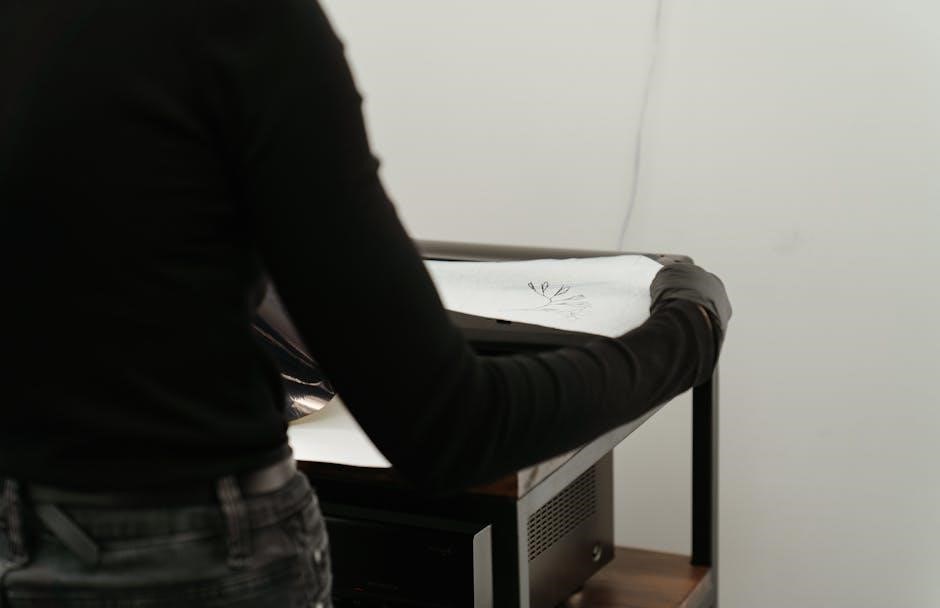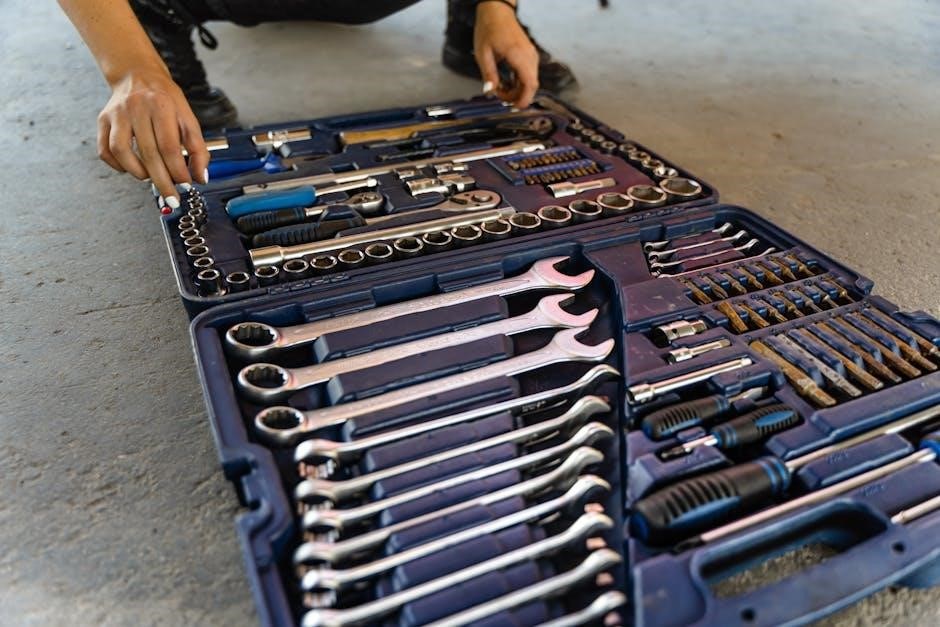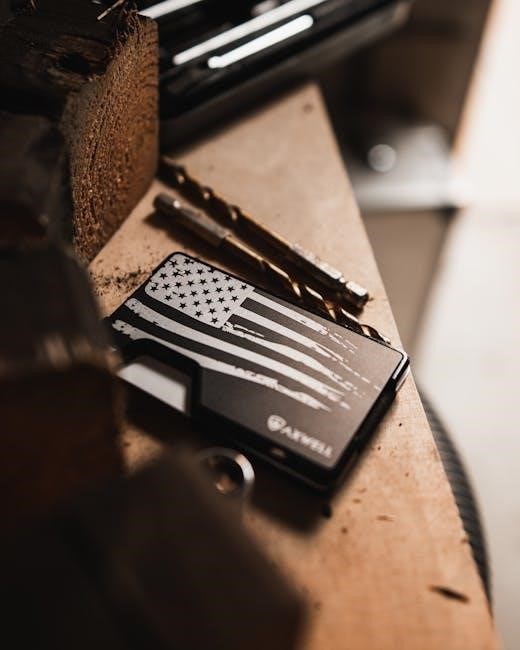To manually shift the transfer case into 2WD, ensure the vehicle is stationary and secure. Locate the transfer case shift lever, typically underneath the vehicle. Move the lever through Neutral and firmly into the 2H position. Apply constant force, and if stuck, gently rock the vehicle to free the mechanism. Avoid pausing in Neutral to prevent gear damage. Once engaged, test the shift by driving slowly to confirm proper operation.

Understanding how to manually put the transfer case into 2WD is an essential skill for drivers of four-wheel-drive vehicles. The transfer case is a critical component that controls the drivetrain, allowing the vehicle to switch between two-wheel drive (2H) and four-wheel drive (4H or 4L) modes. While modern vehicles often feature automatic or electronic shift systems, knowing how to manually engage 2H can be invaluable in situations where the system fails or requires override. This guide provides a step-by-step approach to manually shifting the transfer case into 2WD, ensuring proper engagement and avoiding potential damage to the drivetrain.
Manual shifting is particularly useful when dealing with mechanical issues or maintenance. For instance, if the transfer case becomes stuck in 4H or 4L, manual intervention may be necessary to return to 2H. Additionally, understanding the process can help drivers avoid unnecessary wear on the drivetrain and ensure smoother transitions between drive modes. Whether you’re troubleshooting an issue or simply looking to gain better control over your vehicle, this guide will walk you through the process with clarity and precision.
Key points covered in this guide include:
- Preparation and safety checks before shifting.
- Locating and accessing the transfer case shift mechanism.
- Proper techniques for manual shifting.
- Troubleshooting common issues that may arise during the process.
By following these steps, you’ll be able to manually put the transfer case into 2WD confidently and safely, ensuring optimal performance and longevity of your vehicle’s drivetrain.

Understanding Transfer Case Modes
The transfer case is a crucial component in four-wheel-drive vehicles, enabling the driver to switch between different drivetrain modes. The primary modes are 2H (two-wheel drive high range), 4H (four-wheel drive high range), and 4L (four-wheel drive low range). Each mode serves a specific purpose, and understanding their functions is essential for safe and effective operation.
2H Mode is the default setting for normal driving conditions. In this mode, power is sent to either the rear wheels (in rear-wheel-drive vehicles) or the front wheels (in front-wheel-drive vehicles), optimizing fuel efficiency and performance on paved surfaces. It is not suitable for low-traction situations like snow or mud.
4H Mode engages all four wheels, providing enhanced traction on slippery or uneven terrain such as dirt roads, light trails, or inclement weather. However, it should not be used on dry pavement, as this can cause drivetrain binding and potential damage. 4H is designed for speeds up to 55 mph and is ideal for maintaining control without the need for extreme torque.
4L Mode is reserved for challenging off-road conditions, delivering maximum torque at lower speeds. This mode is perfect for steep inclines, rock crawling, or heavy hauling, where precise control and additional power are necessary. It should only be used at low speeds to avoid mechanical stress.
Modern transfer cases may feature automatic or electronic controls, but manual shifting is still common and beneficial for troubleshooting or maintenance. Understanding these modes ensures proper use, prevents drivetrain damage, and enhances overall vehicle performance. By selecting the appropriate mode for driving conditions, drivers can optimize their vehicle’s capabilities and safety on the road or trail.
Tools and Materials Required
To manually shift the transfer case into 2WD, you’ll need a few essential tools and materials to ensure the process is safe and effective. These items will help you access and operate the transfer case components properly.
- Socket Wrench or Ratchet and Socket Set: For accessing bolts or levers on the transfer case, a socket wrench is indispensable. Ensure it includes common sizes like 10mm, 12mm, and 16mm.
- Torque Wrench: If adjustments or repairs are needed, a torque wrench will help tighten components to the correct specifications.
- Lubricants: Use high-quality gear lube or silicone-based grease to lubricate moving parts and prevent corrosion.
- WD-40 or Penetrating Oil: If the transfer case lever is stuck, penetrating oil can help loosen it before shifting.
- Gloves and Safety Goggles: Protect yourself from potential debris or fluid spills during the process.
- Jack and Jack Stands: For better access to the underside of the vehicle, safely lift and support it with jack stands.
- Owner’s Manual or Repair Manual: Consult your vehicle’s manual for specific instructions and torque specifications.
- Transfer Case Shift Lever Tool: Some vehicles may require a specialized tool to manually shift the transfer case, especially if it’s electronically controlled.
Having these tools and materials ready will ensure a smooth and successful manual shift into 2WD. Always refer to your vehicle’s specific manual for any additional requirements or recommendations. Proper preparation is key to avoiding damage and ensuring safety during the process.
Vehicle Preparation
Before attempting to manually shift the transfer case into 2WD, proper vehicle preparation is essential to ensure safety and success. Start by selecting a safe and level surface to park your vehicle. Engage the parking brake firmly to prevent any unintended movement during the process. Place the transmission in Neutral (automatic) or depress the clutch and shift into Neutral (manual) to disengage the drivetrain. This step is crucial to avoid resistance or damage when shifting the transfer case.
Turn off the engine and allow it to cool slightly if it has been running recently. Ensure all electronic systems, such as four-wheel drive or stability control, are disengaged. Next, locate the transfer case shift lever, which is typically found underneath the vehicle or on the center console, depending on the model. Clean the area around the lever to remove dirt or debris that could interfere with the shifting process. If the lever is stiff or difficult to move, apply a small amount of penetrating oil to loosen it.

Finally, consult your vehicle’s owner’s manual or repair manual for specific instructions, as some models may have unique requirements for manual shifting. Proper preparation ensures a smooth and damage-free transition into 2WD. Always prioritize safety and caution when working with drivetrain components.
Pre-Shifting Checks
Before manually shifting the transfer case into 2WD, conduct a series of pre-shifting checks to ensure the process is safe and effective. First, check the vehicle’s speed and ensure it is stationary. Shifting while moving can cause mechanical stress or damage to the drivetrain. Next, inspect the transfer case lever for any obstructions or damage that might hinder smooth operation. If the lever is stuck or worn, address the issue before proceeding.
Examine the surrounding components, such as the transmission and driveshaft, for any signs of wear or damage. Ensure the parking brake is securely engaged and the vehicle is on a level surface to prevent rolling. If the vehicle is equipped with manual hubs, verify they are in the “free” or unlocked position to avoid resistance during the shift.
Check the transfer case fluid level to ensure proper lubrication. Low fluid levels can lead to difficulty engaging gears or damage to internal components. Also, inspect the shift linkage for any loose connections or misalignment. If the linkage is misaligned, it may not engage the desired gear properly. Finally, review the owner’s manual for model-specific pre-shifting procedures to ensure compliance with manufacturer recommendations.
Addressing these checks beforehand helps prevent complications and ensures a smooth transition into 2WD. Neglecting these steps could result in incomplete engagement or damage to the transfer case.
Shifting into Neutral
Shifting the transfer case into Neutral is a critical step when manually transitioning to 2WD. Begin by bringing the vehicle to a complete stop on a level surface. Engage the parking brake to ensure the vehicle remains stationary during the process. For automatic transmissions, shift the transmission into Neutral (N). For manual transmissions, depress the clutch pedal fully to disengage the transmission from the engine.

Locate the transfer case shift lever, typically found underneath the vehicle or attached to the center console. Move the lever through the Neutral position, ensuring it is not paused or partially engaged. Apply steady, constant force to guide the lever smoothly through the Neutral position. Avoid jerky or abrupt movements, as this could damage the internal gears or mechanisms.
Once the transfer case is in Neutral, confirm the position by checking the lever’s alignment or referring to the owner’s manual for specific guidance. If the lever feels stuck or resistant, gently rock the vehicle back and forth while applying consistent pressure to the lever. This can help free any binding or misalignment caused by mechanical stress.
After successfully shifting into Neutral, the transfer case is ready to transition into 2H mode. Ensure the vehicle remains stationary and the transmission is in Neutral or the clutch is fully depressed before proceeding to the next step. Properly shifting into Neutral prevents gear clash and ensures a smooth engagement into 2WD.
Remember, pausing in Neutral for extended periods can lead to mechanical issues, especially in vehicles with automatic transmissions. Complete the shift to 2H promptly to avoid complications.
Engaging 2H Mode
After shifting into Neutral, the next step is to engage 2H mode. This mode is designed for two-wheel drive operation, where only the rear wheels receive power. With the transfer case in Neutral, firmly move the shift lever directly into the 2H position. Apply steady, consistent pressure to ensure the lever fully engages. Avoid pausing in Neutral, as this can cause gear clash or mechanical stress.
Once the lever is in the 2H position, hold it in place for a few seconds to allow the internal mechanisms to fully engage. You may feel or hear a slight click as the gears lock into place. If the lever feels stuck or resistant, gently rock the vehicle back and forth while applying consistent pressure. This can help overcome any binding caused by mechanical misalignment.
Release the shift lever and ensure it remains securely in the 2H position. Start the engine and test the shift by slowly moving the vehicle forward and backward. If the transfer case engages properly, the vehicle should operate smoothly in two-wheel drive without four-wheel drive activation.
If the transfer case does not engage, repeat the process, ensuring the vehicle is stationary and the transmission is in Neutral or the clutch is fully depressed. Proper engagement of 2H mode is essential for safe and efficient two-wheel drive operation. Avoid driving the vehicle until the transfer case is fully engaged in 2H to prevent damage or loss of control.

Post-Shifting Checks
Once you’ve manually shifted the transfer case into 2H mode, it’s crucial to perform a series of checks to ensure proper engagement and vehicle functionality. Start by visually verifying that the shift lever is securely in the 2H position. If equipped, check the dashboard for any warning lights, such as the Service Engine Soon light, which could indicate a problem with the transfer case or drivetrain;
Next, start the engine and allow it to idle for a few seconds. Gently move the vehicle forward and backward at a slow pace to test the operation of the two-wheel drive system. Pay attention to any unusual noises, vibrations, or resistance, as these could signal incomplete engagement or mechanical issues. If the vehicle moves smoothly without hesitation, the transfer case is likely engaged correctly.
Check the dashboard lights again while driving at a moderate speed to ensure no warning indicators are illuminated. If the Service Engine Soon light remains on, it may be necessary to consult a professional mechanic to diagnose potential issues with the transfer case or related systems.
Finally, ensure the vehicle operates smoothly in 2H mode by driving on a flat, paved surface. Avoid sudden acceleration or sharp turns until you’re confident the transfer case is fully engaged and functioning properly. If any concerns arise, repeat the shifting process or seek professional assistance to avoid further complications.
Proper post-shifting checks help ensure safe and reliable operation of your vehicle in two-wheel drive mode. Always address any issues promptly to prevent long-term damage to the transfer case or drivetrain components.
Maintenance Tips

Regular maintenance is essential to ensure the longevity and smooth operation of your transfer case. Start by checking the transfer case fluid level regularly, as low or dirty fluid can lead to poor performance and premature wear. Use the manufacturer-recommended fluid type and change it every 30,000 to 60,000 miles, depending on usage conditions.
Inspect the shift lever and linkage for any signs of wear or damage. Lubricate the shift mechanism periodically to prevent stiffness and ensure smooth operation. If you notice any play or looseness in the lever, tighten the mounting bolts or replace worn components immediately.
After manually shifting into 2H, always check the dashboard for warning lights. If the Service Engine Soon light illuminates, it may indicate a problem with the transfer case or related systems. Address this promptly by consulting a professional mechanic to avoid further damage.
Regularly inspect the transfer case seals and gaskets for leaks; If you notice any fluid leakage, replace the damaged seals without delay to prevent contamination and damage to internal components. Clean the transfer case and surrounding areas to ensure proper inspection and maintenance.
Finally, avoid sudden acceleration or sharp turns immediately after shifting into 2H. Gradual movements help reduce stress on the drivetrain and ensure proper engagement of the transfer case. By following these maintenance tips, you can extend the life of your transfer case and ensure reliable performance in 2WD mode.
Troubleshooting Common Issues
When manually shifting the transfer case into 2WD, several common issues may arise. One frequent problem is a stiff or stuck shift lever, often due to lack of use or environmental factors like dirt and corrosion. To address this, ensure the vehicle is stationary and apply steady, consistent force to the lever. If it remains stubborn, gently rocking the vehicle back and forth can help dislodge the lever and free up the mechanism.
Another issue is improper vehicle preparation. Always ensure the vehicle is completely stopped and the transmission is in Neutral before attempting to shift. Failure to do so can result in incomplete engagement or damage to the transfer case. If the transfer case does not engage, double-check that the vehicle is secure and the transmission is properly in Neutral.
Low or dirty fluid levels in the transfer case can also hinder smooth operation. Regularly inspect the fluid and top it off with the recommended type if necessary. Contaminated fluid should be drained and replaced to prevent internal component damage. Additionally, inspect the shift linkage for wear or damage, as any play or looseness can interfere with the shifting process.
For electronically controlled transfer cases, electrical faults such as faulty sensors or solenoids may prevent proper engagement. In such cases, consult a professional to diagnose and repair any electrical issues. If the transfer case is in a bind due to axle misalignment, carefully moving the vehicle forward and backward can relieve tension and allow the shift to occur smoothly.
Finally, avoid improper shifting techniques, such as hesitating in Neutral or applying insufficient force. This can lead to incomplete engagement or potential damage to internal gears. If persistent issues arise, consult a qualified mechanic to inspect and repair the transfer case, ensuring reliable operation in 2WD mode.
Professional Tips for Smoother Shifts
Achieving smooth shifts when manually putting the transfer case into 2WD requires a combination of proper technique and vehicle preparation. One key tip is to ensure the vehicle is on a level surface and completely stationary before attempting any shift. This prevents uneven stress on the drivetrain, which can make shifting more difficult.
Professional mechanics recommend applying constant and steady force to the shift lever rather than abrupt jerks, as this can damage internal components. For vehicles with manual transmissions, depressing the clutch fully while shifting can help disengage the drivetrain more effectively. In automatics, shifting into Neutral and keeping the brake applied ensures the vehicle isn’t under any load during the shift.
Another expert tip is to use the vehicle’s momentum to your advantage. When downshifting from 4H or 4L to 2H, rolling at a slow, steady speed (2-3 mph) allows the gears to align more smoothly. Gently releasing the accelerator during the shift can also help the transfer case engage more quickly and seamlessly.
Regular maintenance is crucial for smooth operation. Ensure the transfer case is filled with the correct type and level of fluid, as specified in the owner’s manual. Clean or replace the shift linkage and bushings periodically to maintain precise control over the lever. Additionally, lubricating the shift mechanism can reduce friction and make shifts feel more effortless.
Finally, practice makes perfect. The more familiar you become with your vehicle’s specific shift characteristics, the smoother your transitions will be. Pay attention to any unusual resistance or noises, as these can indicate potential issues that should be addressed before they escalate into major repairs.
Legal and Safety Considerations

When manually putting the transfer case into 2WD, it is crucial to adhere to legal and safety guidelines to avoid accidents and potential damage to your vehicle. Always ensure the vehicle is stationary and securely braked on level ground before attempting any manual shifts. Never attempt this procedure while the vehicle is in motion, as it can lead to loss of control and accidents.
Wear appropriate protective gear, such as gloves and safety glasses, to protect yourself from potential hazards during the process. Ensure the vehicle is in neutral or park, depending on the transmission type, and apply the parking brake firmly. Avoid sudden movements or applying excessive force to the shift lever, as this can damage the transfer case or related components.

Be aware of local traffic laws regarding vehicle modifications and ensure your vehicle complies with all regulations after performing any manual shifts. If the transfer case becomes stuck or difficult to shift, avoid forcing it, as this could lead to mechanical failure. Instead, seek assistance from a professional mechanic to prevent further damage.
Finally, always refer to your vehicle’s owner’s manual for specific instructions and guidelines related to transfer case operation. Ignoring safety precautions can result in legal consequences, injury, or costly repairs. Prioritize your safety and the integrity of your vehicle when performing manual shifts.
Manually putting the transfer case into 2WD is a straightforward process when done correctly, but it requires careful attention to detail and adherence to proper procedures. Always ensure the vehicle is stationary, secure, and in neutral or park before attempting any manual shifts. By following the steps outlined, you can safely transition your vehicle into 2WD mode, ensuring optimal performance and preventing potential damage to the transfer case or drivetrain.

Remember, forcing the shift or neglecting safety precautions can lead to mechanical failure, legal consequences, or even personal injury. If you encounter resistance or difficulty during the process, it is essential to seek professional assistance rather than risking further complications. Regular maintenance and proper handling of the transfer case will extend its lifespan and ensure reliable operation in all driving conditions.
By understanding the mechanics of your vehicle and following the guidelines provided, you can confidently manage the transfer case and maintain control over your vehicle’s performance. Whether you’re driving on paved roads or off-road terrain, proper transfer case operation is key to a safe and enjoyable driving experience.





